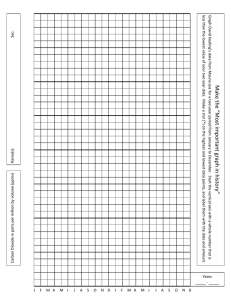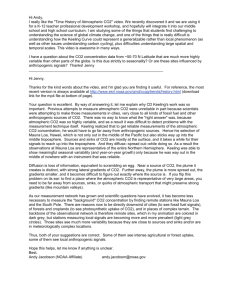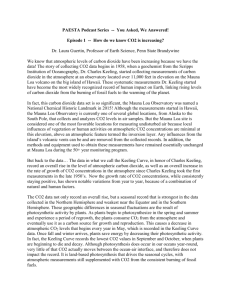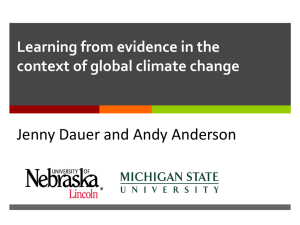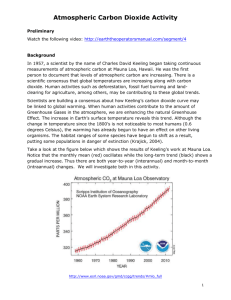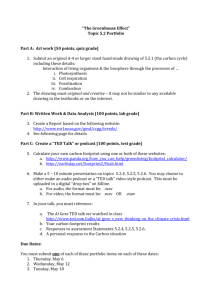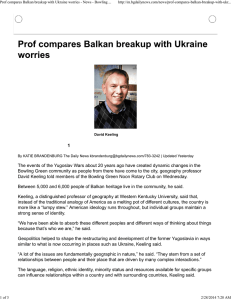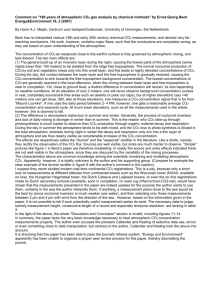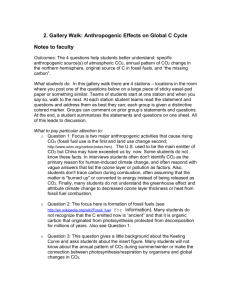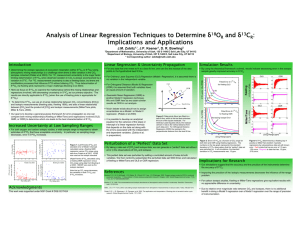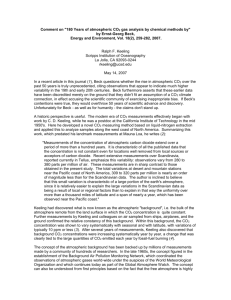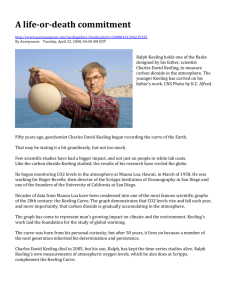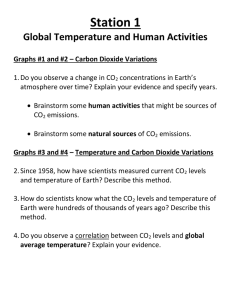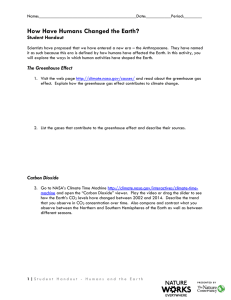17 Keeling curve discussion questions
advertisement
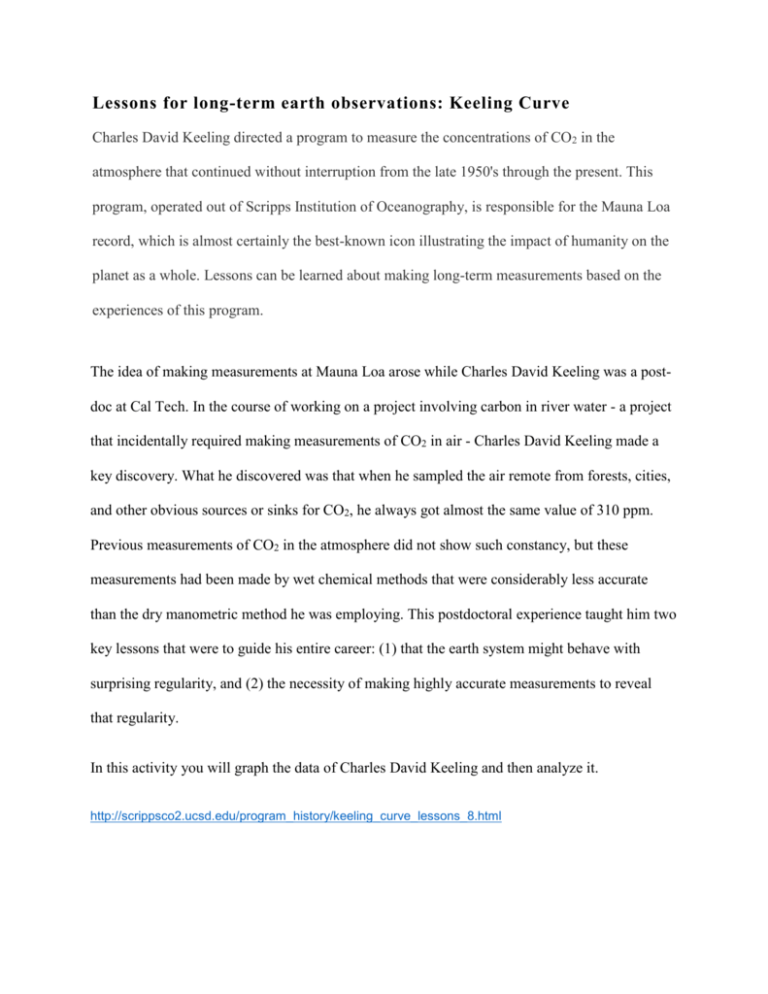
Lessons for long-term earth observations: Keeling Curve Charles David Keeling directed a program to measure the concentrations of CO2 in the atmosphere that continued without interruption from the late 1950's through the present. This program, operated out of Scripps Institution of Oceanography, is responsible for the Mauna Loa record, which is almost certainly the best-known icon illustrating the impact of humanity on the planet as a whole. Lessons can be learned about making long-term measurements based on the experiences of this program. The idea of making measurements at Mauna Loa arose while Charles David Keeling was a postdoc at Cal Tech. In the course of working on a project involving carbon in river water - a project that incidentally required making measurements of CO2 in air - Charles David Keeling made a key discovery. What he discovered was that when he sampled the air remote from forests, cities, and other obvious sources or sinks for CO2, he always got almost the same value of 310 ppm. Previous measurements of CO2 in the atmosphere did not show such constancy, but these measurements had been made by wet chemical methods that were considerably less accurate than the dry manometric method he was employing. This postdoctoral experience taught him two key lessons that were to guide his entire career: (1) that the earth system might behave with surprising regularity, and (2) the necessity of making highly accurate measurements to reveal that regularity. In this activity you will graph the data of Charles David Keeling and then analyze it. http://scrippsco2.ucsd.edu/program_history/keeling_curve_lessons_8.html In groups of two to three persons graph three years of data. Check with your instructor for the years you will graphing plus the units and the spacing. These must be exact as you will be taping your data to your classmates to form a continuous graph with almost 50 years of data. Connect your data points with black pen. Note: To prevent skipping lines of data place a blank piece of paper under the year you are graphing. Discussion: How is atmospheric carbon dioxide measured? Why is it important for carbon dioxide data to be taken in a remote location? Why does the data show a small oscillation pattern within the larger shape? What is the overall trend in CO2 levels since the 1950s? What predictions for the future can we make using the graph? Why is it difficult to extrapolate future values of CO2 at this time? What other data would be useful in determining atmospheric changes and how they relate to climate change?
